How the Italian aristocrat became a genius Soviet aircraft designer
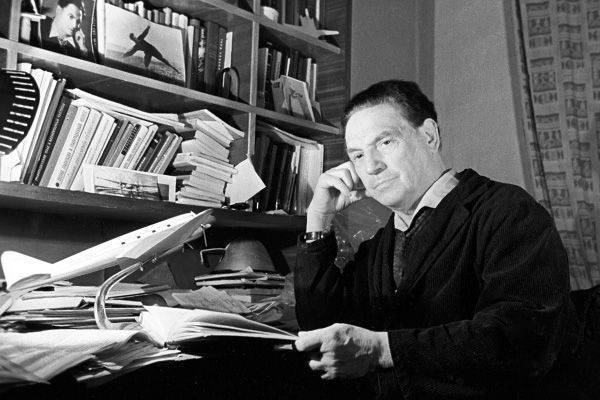
77 years ago, in February 1938, the NKVD arrested the aircraft designer Robert Bartini, known by the nickname "Red Baron". Stalin personally saved him from execution. In Taganrog, where Bartini worked, there is a street named after him, but little is known to the general public about this person.
“As a student at the Kharkov Aviation Institute, I heard the following phrase from a teacher:“ If you meet a person by the name of Bartini in your life, consider yourself lucky: this is a real genius, ”recalls Taganrog aircraft designer Leonid Fortinov. - More professor could not say. Then everything that was connected with Bartini, was classified as "secret".
Subsequently, Leonid Fortinov managed not only to get acquainted, but also to make friends with Bartini. Once he turned to the leadership of the KB with a rationalization proposal. The young designer was advised to talk "in-oh-he with the man behind the cabinet," without naming either the name or the name of the stranger.
- The first thing that caught my eye was a dark head of hair and a shirt of unusual aristocratic style with a semicircular collar and cuffs. I also remember the polite manner of communication and a slight accent against the background of impeccable mastery of the Russian language, - says Leonid Fortinov about his impressions.
“The man behind the cabinet” listened attentively to the employee, understood from a half-word and approved his idea. And later they became so close that Bartini joked in telephone conversations: "Signor Bartini calls maestro Fortini."
“In fact, Bartini himself was Fortini,” says Leonid Fortinov. “It’s difficult to explain the fact that he repeatedly managed to avoid death as the favor of Fortune.
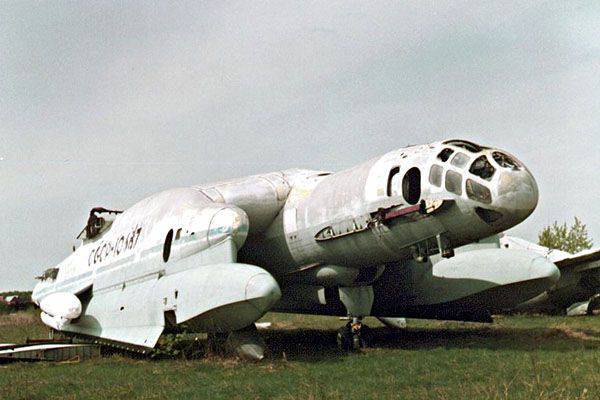
Sentenced
Robert Bartini was born in the family of an Italian immigrant aristocrat who moved to Austria-Hungary, and inherited from his father the title of baron. But Bartini himself preferred not to dwell on this topic.
“I don’t know much about my father’s childhood,” recalls Vladimir Bartini, son of an aircraft designer living in Taganrog. “I only know that once during a solemn evening, at which the overdressed aristocratic audience gathered, my father made a joke about a noble assembly. With the help of the clarinet, he made a deafening cry of an ass. There was a lot of confusion.
In 1916, after accelerated officer courses, Bartini was sent to the front, where he immediately got into an unpleasant history. A quarrel broke out between him and the front-line officer, who disliked the noble “youth”. According to some reports - because of the executed colleague, for whom Bartini stood up.
- The army captain rudely demanded that Bartini salute, and received a bold reply: “I must have one,” says Leonid Fortinov. - The enraged frontline grabbed for weapon. Bartini's holster was unbuttoned, and he managed to grab the pistol a second earlier. Bartini wounded the captain in his hand, for which he was sentenced to death. However, they did not have time to execute the sentence: during the Brusilov breakthrough, Bartini was captured by the Russian Cossacks.
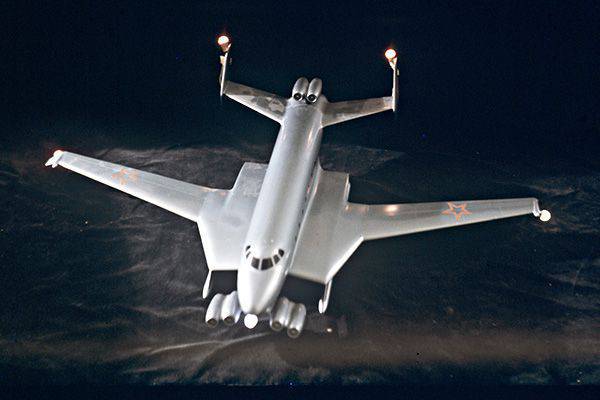
The prisoners were sent to the Far East. At first they walked to Kiev, then there was a long train ride. In the camp near Khabarovsk, Bartini, despite his noble birth, became close to the socialists. And again he was in danger: the officer court secretly sentenced him to death "for treason against the interests of the class."
During the repatriation of prisoners of war Bartini almost drowned. The prisoners were transported by sea through Vladivostok, and the repatriate officers agreed to throw Bartini overboard. Fortunately, the captain of the vessel in time found out about the impending assassination attempt and landed the "uncomfortable" passenger in Shanghai.
Bartini had to return home through China, India, Nepal and Yemen. However, the convinced socialist did not go to the influential baron-father. He got a job at the Izotta Frascini factory, entered the Polytechnic Institute of Milan and became a member of the Italian Communist Party. According to rumors, Bartini even gave his inheritance to the party, which is why the unofficial nickname “Red Baron” was assigned to him.
Bartini’s active party activities did not go unnoticed: the fascists of Mussolini established surveillance on him, and the IKP Central Committee decided to transport Bartini to the USSR through Berlin.
- Bartini had two characteristic words, which he uttered with a deliberately Italian accent: "Zavoralo" and "Genialo," recalls Leonid Fortinov. - The first he used if he heard some nonsense. The second word, on the contrary, expressed the highest degree of approval. Once I started talking to Bartini about his shipment to the USSR. He himself did not tell anything about it, and I could only speculate. “Probably, you were needed by the Soviet Union as the second Zorge, so you were sent across the border?” I asked. “Genialo!” He answered, smiling mysteriously. And then he added: "Only Richard Sorge knew four languages, and I was seven." Then I asked another question: “But how did you manage to move through all the cordons if agents of Mussolini were hunting for you? Probably, you were secretly transported with a diplomatic cargo.” Bartini smiled again: "Genialo!"
Enemy of the people
In 1923, Bartini received a Soviet passport and got a job at a research and experimental (now Chkalovsky) airfield. From that moment on, Bartini began to amaze his fellow aircraft designers. For example, a curious story was connected with the Bartini Stal-6 fighter. The Soviet engines of that time did not allow the car to accelerate more than 300 kilometers per hour. Aircraft designers in one voice argued that this is physically impossible. Bartini silently developed his model. Due to the closed and "licked" into the body of the cabin, sealing the fuselage, streamlined shapes and retractable landing gear, he managed to overcome the speed barrier.
“Once at a meeting of aircraft designers, attended by Tukhachevsky and Ordzhonikidze, the question was raised again about increasing the speed of fighters,” says Leonid Fortinov. - The designers gave a lot of arguments, formulas and calculations, proving that this is impossible. Ordzhonikidze flared up: “Why did they invite me ?! Why discuss what is impossible ?!” But Tukhachevsky, who supported Bartini and liked theatrical effects, declared: "Here is the designer who has accomplished the impossible." No one believed it. Then Tukhachevsky organized a trip to the airfield.
The Bartini fighter taking off showed a speed of 320 kilometers per hour. Then he increased it to 350 kilometers per hour. But this was not the limit. "Steel-6" has developed a speed of up to 420 km / h. A modification of the Stal-8 fighter was supposed to fly at a speed of more than 600 km / h. But Bartini was not allowed to finish the work on this project.
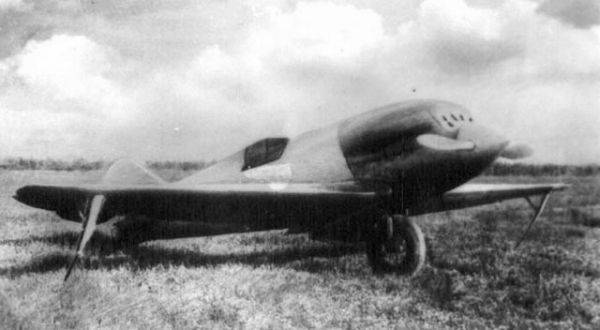
The designer was disliked by some colleagues. This was especially evident when the central design bureau was created, but the experts invited there did not solve common problems, but continued to work on their developments. Bartini wrote a letter to Stalin and asked for action. The reaction was immediately followed: the designer was called "on the carpet" to the party secretary. Dissatisfied with the fact that the letter to Stalin passed by him, the party functionary pounced on Bartini with an insult.
“Do not yell at me,” Bartini calmly replied and left the office. He was fired, and in 38, he was arrested in the “Tukhachevsky case” and accused of spying for Mussolini.
“Apparently, the father suffered torture in custody,” Vladimir Bartini believes. - He did not admit it, but I remember his broken fingers. It is unlikely that it was a normal injury. The aircraft designer was again sentenced to death, but this time he was saved from the seemingly inevitable death. Stalin was impressed by the record direct flight of the Bartini aircraft on the route "Moscow - Sverdlovsk - Sevastopol - Moscow". Learning that the creator of the aircraft should be shot, Stalin ordered to give him the opportunity to work. So the designer got into the famous "Tupolev sharashku".
Stalin remembers another Bartini aircraft - the long-range bomber "DB-240" (EP-2), which participated in the bombing of Koenigsberg and Berlin during the war. And in the 1946 year, appreciating his technique, Stalin gave the subconsolete designer the opportunity to choose a place to work. Bartini chose the Taganrog plant named after Dimitrov, but he had heavy memories for a long time.
- Once Bartini suggested that I take a picture with him in a group picture. I refused. He explained that my father was repressed. “But why should you, after all that have been experienced, be photographed with the son of the repressed? How could it turn out,” I said. Bartini came up, hugged me and, almost crying, said: “Thank you,” recalls Leonid Fortinov.
Six-dimensional space
Despite the endured trials, Bartini remained a gentle and benevolent person, who amazed his interlocutors with his culture and education.
- My father knew Russian better than many of us and was fluent in foreign languages. He could sing an aria from an opera or cite in Latin Cicero. He even showed me how meetings were held in the Roman Senate. The father spoke with accusatory speech as an ancient Roman orator, portraying the whole gamut of emotions on his face, but at the same time he kept his body still, so that, as he put it, “even the edge of the toga did not budge,” says the aircraft designer's son.
As Vladimir Bartini notes, his father got along well with children. Even the most capricious child calmed down when Bartini Sr. began to talk. The calm and pacifying sound of his voice somehow affected the children.
“And my father could also make an EK-plane model out of a piece of paper as easily as we make paper airplanes.” But its ekranoplan always flew smoothly and steadily. My father did a lot for the development of the domestic aircraft industry, but all his life he called design activity a craft. He considered physics and philosophy to be real work and true vocation, ”explains Vladimir Bartini. - Some paradoxical thoughts and ideas were constantly spinning in his head. Even when I was little, he tried to speak with me in simple language about difficult things. Speaking about the theory of relativity, he gave an example with a raft: "If a river flows, a raft floats along it, and a man goes along the raft, then the person will move differently relative to the raft and relatively stationary bank."
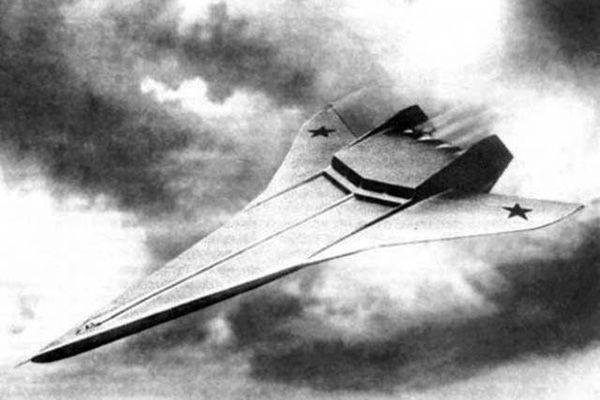
There were other non-children's issues that Bartini Sr. tried to discuss with his son. He could take a sheet of paper and sketch out a face on it with dots, wand and tick. To the question "What is it?" the son replied: "The face, of course." “How do we understand this?” The philosopher-designer wrinkled his forehead. “After all, in reality, a person’s face looks completely different. What is the mechanism of understanding ?!”
“He really lived in a world of ideas that are not always accessible to ordinary people,” agrees Leonid Fortinov. - Once Bartini showed me his calculations, from which it followed that we are surrounded by a world in which there are not four dimensions - length, height, width and time - but six. Bartini believed that each of the three dimensions of space is influenced by different temporal laws, that is, there is a time for length, for width there is one and for height there is one.
Will
Already after Bartini’s death, Leonid Fortinov sent several drafts to Moscow, mathematicians, speckled with formulas. But the whole scientific team could not decipher the designer’s entries. Many experts did say that Bartini was ahead of his time. Apparently, he himself understood it. Bartini left a strange testament, in which he asked to solder all his labors into a metal box and open it in 300 years.
“Unfortunately, the last will of the deceased was not fulfilled,” says Leonid Fortinov. “After Bartini’s death, there were two huge bags of papers: calculations, drawings, formulas, notes. Nobody began to seal them in a box, and there was no such box where all this would be located. Colleagues kept bags at work, occasionally fighting off auditors who demanded that the cabinet be freed from unnecessary papers. And when people who knew Bartini, retired, his paper simply burned.
The unexpected death of Bartini caused a lot of speculation. But in fact, the designer died of natural causes.
- He suffered from arrhythmia. I often saw Bartini tapping his chest. And in one of the conversations Bartini admitted: most of all he was afraid that he could not control his body. - recalls Leonid Fortinov.
On that fateful evening, the body refused. The aircraft designer was found dead on the floor of his own bath.
“My father calls me two associations: Goodwin from The Wizard of the Emerald City, and Yeshua from The Master and Margarita,” admits Vladimir Bartini. - Goodwin everyone wanted to see not the way he was in reality. And Yeshua ... Remember how he said: "He walks, walks alone with goat parchment and continuously writes. But I once looked into this parchment and was horrified. I didn’t say anything of what was written there."
The last project Bartini worked on was the unique BBA-14 amphibian, vertically taking off. Subsequently, at its base was created a wig. But the realization of another grandiose idea - an aircraft carrier on hydrofoils, which literally flies on water at speeds up to 700 km / h and on which the planes could land without shedding their speed, the designer never had time to start.
Shortly before Bartini’s death, as if anticipating a quick demise, he proposed Leonid Fortinov to become his deputy.
“But then I was absorbed in the development of floats for BBA-14 and refused,” says Leonid Fortinov. - I will never forget how Bartini, upon hearing my refusal, slouched and wilted as if he was a little bird. "And what should I do?" he asked, confused. I found him a deputy and promised that I would move to this position myself a little later, but I did not have time.
Bartini developments used in aviation so far, have been so successful that they have been named in his honor. Bartini's Wing, Bartini's Ring, Bartini's Effect ... Korolev even thought that without Bartini, a satellite would not have flown into space.
The case in the Crimea
In Sevastopol, where Bartini worked on the creation of seaplanes, an interesting incident happened once. The designer told the young pilots how to jump from a height and enter the water, using the laws of aerodynamics and hydrodynamics. "If everything is done correctly, it will not be scary to jump even at-oh with that arrow," Bartini pointed to the 35-meter crane at the barge anchored not far from the coast. “If it’s not scary, prove it,” the pilots didn’t believe. Bartini refused, but when he heard behind him: “Sdrireyfil!”, He could not resist. "Italian blood has stirred up in me!" - he later admitted to Leonid Fortinov.
Bartini undressed, jumped into the water and swam to the barge. “But the closer I swam, the crane arm seemed more impressive. I hoped that the barge would be guarded, they would not let me on board and would have to return,” he said afterwards. However, there was not a single person on the barge.
The aircraft designer had to climb the crane. From the height everything seemed even worse. But looking at the crowd gathered on the shore, Bartini thought that he could be seen by a woman from the medical unit with whom he was then in love. The designer jumped upside down on all the rules of aerodynamics, as he taught the pilots. “I entered the water easily and painlessly, but too deep - I had to float for a long time,” he recalled. But on the shore of Bartini greeted with applause.
Information